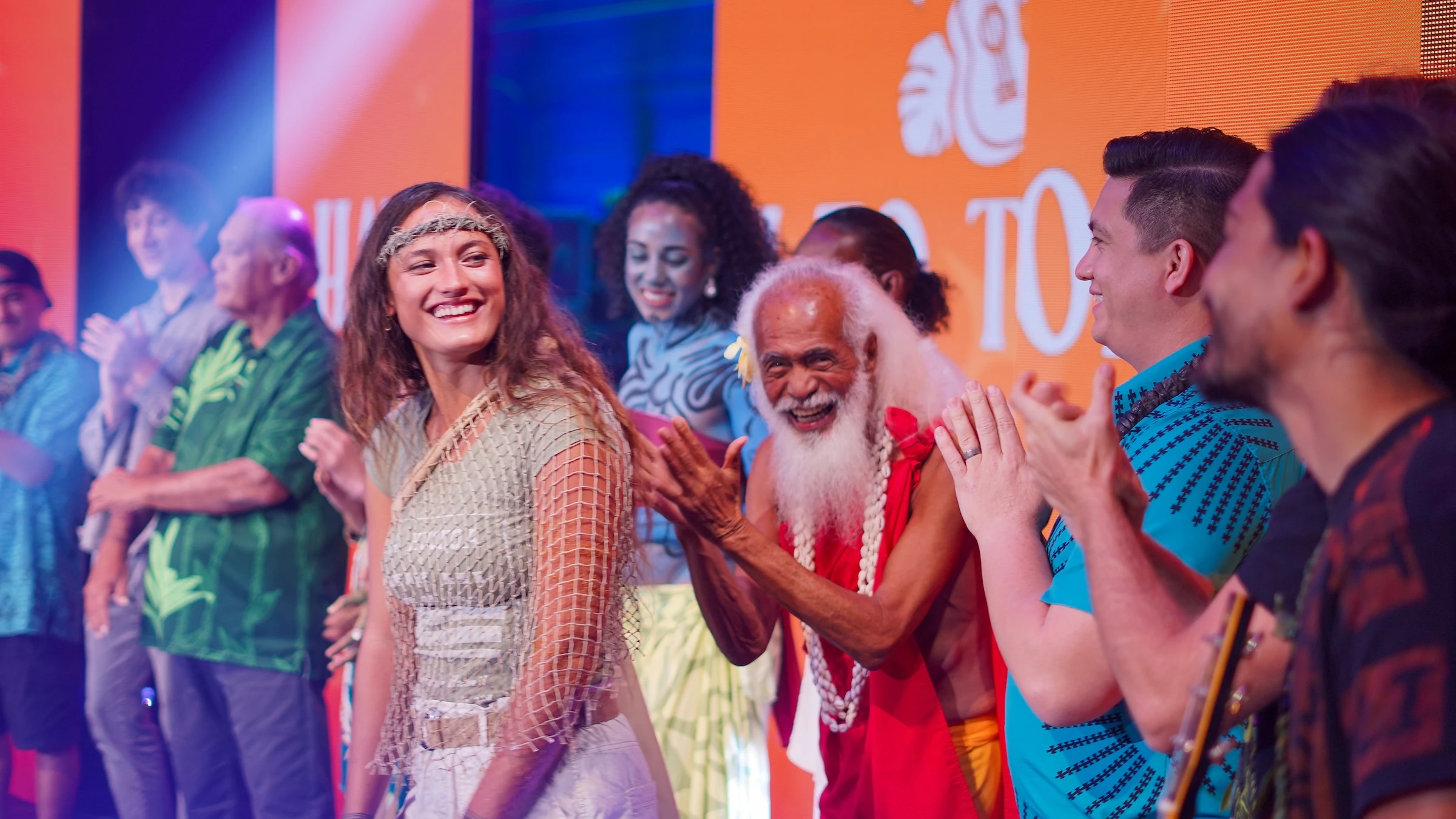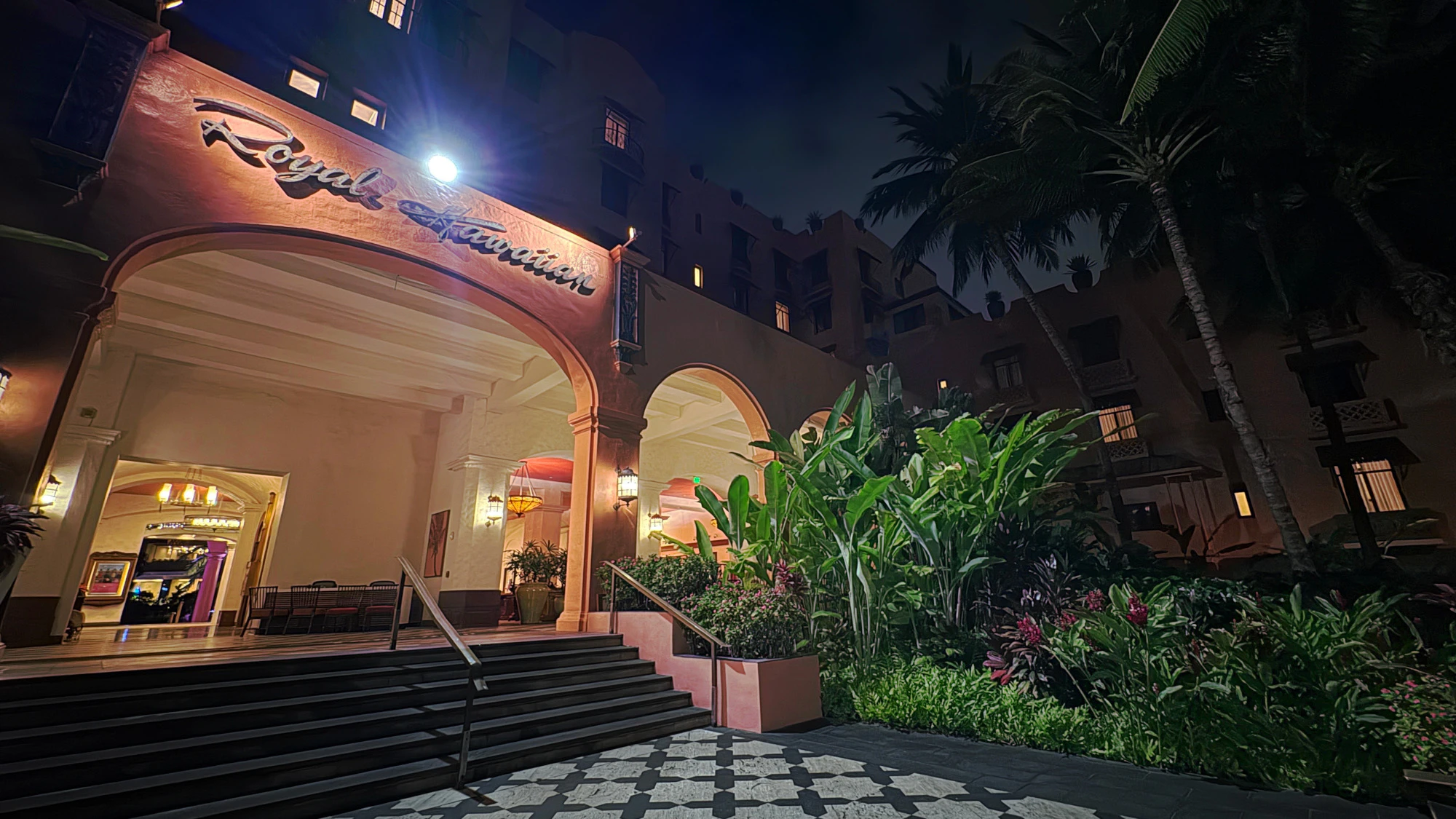Today, this site is known as the Hawaiian Mission Houses Historic Site and Archives. It’s a museum and educational center that shares the stories of a not-so-distant past. Tales of missionaries who traveled halfway around the globe, the aliʻi who lived in the area and granted them land, and the Native Hawaiians whose world was forever changed. More than 200 years ago, the area of Honolulu was known as Kou, a dry, flat plain.
When foreign ships began to arrive in the late 18th and early 19th centuries, they brought profound change, including the first company of American missionaries in 1820. Upon their arrival in Honolulu, they sought to establish a base for their work, and Governor Boki granted them land near a quiet spring that fed a pool of brackish water. This spring was called ka wai a Ha‘o, the water of Ha‘o, named for the ali‘i who frequented the area.
Between 1821 and 1832, the missionaries built three houses that still survive today. The Mission House, built in 1821, is Hawaii’s oldest surviving wood-frame structure and served as both a residence and a gathering place. Deciding that a grass house was not a safe place to store goods, Levi Chamberlain built a two-story coral structure in 1831, to which he and his wife welcomed constant visitors and travelers. The original intention of the 1841 building was to serve as a bedroom annex for missionary families, but it was later used as the Printing House and is the site of the first printing press in Hawai‘i.
Nearly two centuries later, these simple buildings remain, quiet witnesses to the structural and societal transformation of Honolulu. They tell of cultural upheaval, emerging literacy, new laws, and continuous growth. Yet when the evening settles and the city grows quiet, the past lingers in the shadows, waiting for anyone willing to listen. And it is here, in the silence of this historic ground, that the stories take a darker turn.
It was late, long after the museum had closed, when a young man decided he would “investigate” the grounds of the Mission Houses. Trying to make sure no one could see him, he waited for a car to pass and then stepped over the low coral wall that ran along Kawaiahaʻo Street. His only companion was his cell phone, armed with what he proudly called “ghost-hunting apps.” He claimed one was an EMF detector and another a ghost tracker.
As he approached the back of the two-story stone house, his screen announced that a ghost was standing near the old water pump in front of him. Switching to his camera app, he began snapping pictures. Then something drew his eyes upward. Though the house was unlit, he swore he saw a figure in the window. Excited, he aimed his phone and clicked frantically until he suddenly felt a hard shove on his right shoulder. He stumbled, his phone flew from his hand, and when he spun to confront whoever had touched him, no one was there. The shadow in the window had also vanished.
Determined, he retrieved his phone and reopened his EMF app. The digital needle quivered wildly toward the red. Certain that meant a spirit was close, he raised his camera again. But before he could take more than a few shots, something struck him across his shin. He toppled to the ground, scraped and shaken. Was a ghost trying to harm him? Did he really believe that?
Giving up on his lone adventure, he left the property and walked to the 7-Eleven on the corner. He bought a cup of coffee and sat at a table by the window to review his photos, but stared in disbelief as he scrolled through his pictures. The only photo that came out clear was the water pump, but there was nothing interesting in that pic. No weird shadows, no orbs, nothing cool. But every other picture he took that night was blurry. To confirm that nothing was wrong with his camera, he took a picture of the fire station outside the window, and it was perfectly clear and sharp.
I expected disappointment, but the young man was not deterred. In his mind, the blurred photographs were proof, not of failure, but of success. He was convinced that whatever walked the grounds that night had taken steps to remain unseen and must have purposely caused his photos to be blurry.
Stories like this are not without precedent. In his book, Honolulu Cop, Retired Honolulu Police Department Major Gary Dias wrote about strange occurrences at the Mission Houses Museum. Late one night, officers received a call about an alarm at the Mission Houses. Within minutes, they pulled onto Mission Lane, where a representative from the alarm company was already waiting. He explained that their system had detected an entry. Yet when the officers checked the grounds, every door and window was tightly secured.
The company rep unlocked the house, and the group went inside. Everything appeared undisturbed. Outside again, the officers discussed the likelihood of a faulty system until the alarm signaled another entry. The rep swung the door open and shut a few times, hoping the problem might resolve itself.
However, just as they turned to leave, the rep shouted, “Look!”
He swore he saw a man staring down from the window. The officers rushed back in, conducting a careful, room-to-room search, moving in pairs to ensure nothing was missed. They paused often in the silence, straining for the faintest sound. But the house was quiet.
When asked about hidden doors or passages, the alarm company man only shrugged. The group began walking back to their cars when the rep cried out once more.
“Come! There’s somebody inside!”
This time, the window was standing open.
The officers scoured every corner: under beds, inside closets, behind furniture, even in cabinets and drawers. Anything that could be opened was opened and searched.
Nearly two hours had passed since the first call. At last, they locked up and gathered outside. Once more, the alarm system showed an entry.
“It’s a malfunction,” one officer muttered.
They walked to their cars in silence. Not one of them dared look up at the dark windows.
For the latest news of Hawai‘i, sign up here for our free Daily Edition newsletter!





